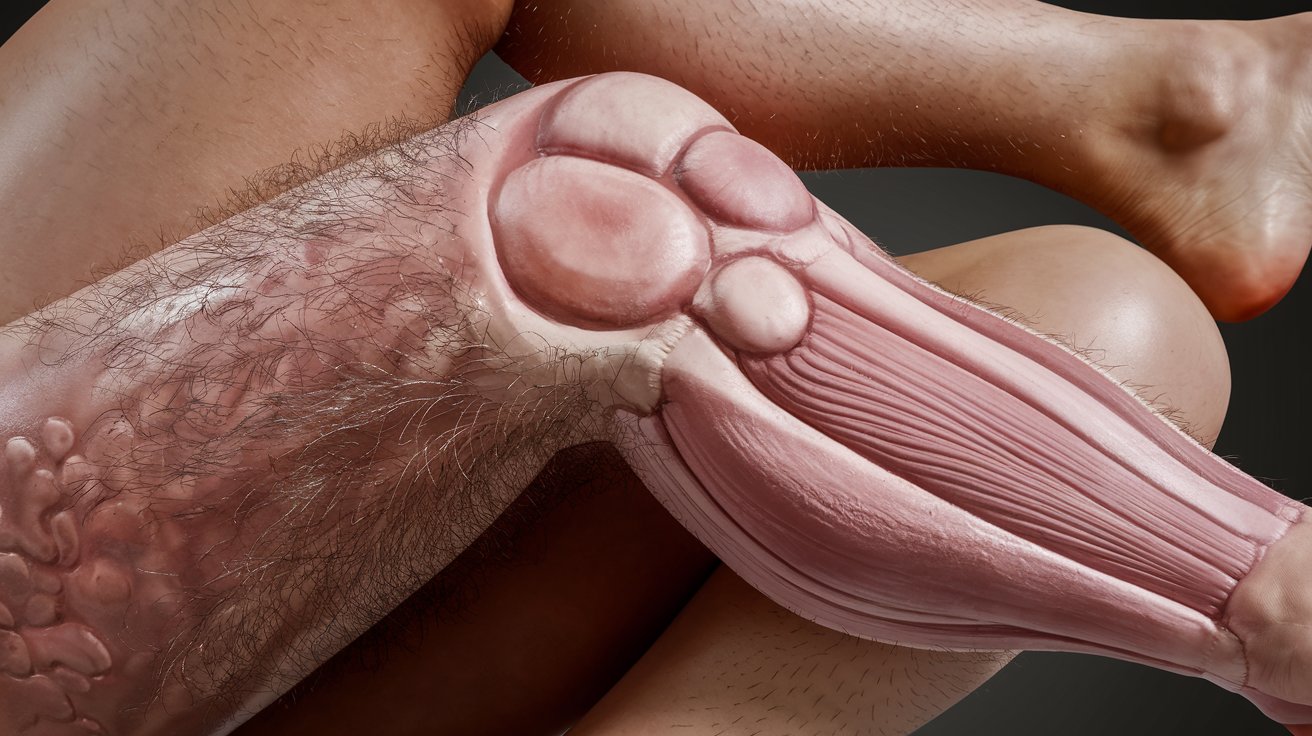
What is Klippel-Trénaunay Syndrome? Klippel-Trénaunay Syndrome (KTS) is a rare congenital disorder that affects blood and lymph vessels, leading to various physical complications. This condition, present from birth, is marked by a unique triad: port-wine stains, varicose veins, and limb overgrowth. Affecting about 1 in 20,000 to 40,000 children, KTS can cause pain, swelling, and even life-threatening issues like blood clots and infections. While the exact cause remains unknown, some cases link to mutations in the PIK3CA gene. Managing KTS involves a multidisciplinary approach, including compression therapy, medications, and sometimes surgery. Understanding KTS is crucial for early diagnosis and effective treatment.
What is Klippel-Trénaunay Syndrome?
Klippel-Trénaunay Syndrome (KTS) is a rare congenital condition that affects blood and lymph vessels, leading to various physical complications. Understanding this syndrome can help in managing its symptoms and improving the quality of life for those affected.
-
Definition and Synonyms: Klippel-Trénaunay Syndrome, also known as KTS or KT syndrome, is sometimes referred to as angio-osteohypertrophy syndrome or hemangiectatic hypertrophy.
-
Etiology: The exact cause of KTS remains unknown. It is generally considered a sporadic condition, though some inherited cases have been reported.
-
Prevalence: KTS is rare, affecting about 1 in 20,000 to 40,000 children. It impacts both sexes equally and is seen across all races.
Key Clinical Features of KTS
KTS presents with a variety of symptoms and physical characteristics. Recognizing these features is crucial for early diagnosis and management.
-
Clinical Features: The syndrome is marked by a triad of vascular malformations, soft tissue and bone hypertrophy, and limb overgrowth. Common features include port-wine stains, venous varicosities, and limb enlargement.
-
Symptoms: Symptoms vary widely but often include pain, lymphedema, swollen limbs, varicose veins, port-wine stains, and enlarged limbs or digits. Rarely, internal organs may be affected.
-
Vascular Malformations: These malformations are typically low-flow, involving capillaries and veins rather than high-flow arteriovenous malformations. This differentiates KTS from Parkes Weber syndrome.
Complications and Differential Diagnosis
Understanding potential complications and differentiating KTS from other conditions is vital for effective treatment.
-
Complications: Individuals with KTS face higher risks of blood clots, pulmonary embolisms, infections, bleeding from irregular vessels, cellulitis, and skin breakdown.
-
Differential Diagnosis: KTS can be confused with other vascular malformation syndromes, such as Diffuse Capillary Malformation with Overgrowth (DCMO), Parkes Weber syndrome, and others.
Managing Klippel-Trénaunay Syndrome
Effective management of KTS requires a multidisciplinary approach, involving various healthcare professionals and treatment strategies.
-
Management: Treatment typically involves dermatologists, vascular surgeons, orthopedic specialists, and other healthcare providers. Conservative treatments include compression stockings, pneumatic compression devices, and medications to prevent blood clots.
-
Surgical Interventions: Surgery may be necessary to seal off abnormal vessels, correct varicose veins, or prevent limb overgrowth through procedures like epiphysiodesis.
Diagnostic Workup and Genetic Considerations
Proper diagnosis and understanding of genetic factors are essential for managing KTS effectively.
-
Diagnostic Workup: Diagnosis is primarily clinical, based on the characteristic triad of symptoms. Imaging studies like ultrasound, MRI, and CT scans help confirm the diagnosis and assess the extent of malformations.
-
Genetic Considerations: Some cases of KTS have been linked to mutations in the PIK3CA gene, associated with the PIK3CA-related overgrowth spectrum (PROS).
Prognosis and Lifelong Follow-Up
The long-term outlook for individuals with KTS varies, but ongoing care and monitoring are crucial.
-
Prognosis: Most individuals with KTS live normal lives, though the risk of complications necessitates close monitoring and management.
-
Lifelong Follow-Up: Regular check-ups are essential to monitor for signs of blood clots, infections, and other issues related to vascular malformations.
Surgical and Orthopedic Interventions
Addressing physical deformities and complications often requires surgical and orthopedic interventions.
-
Surgical Interventions: Procedures to correct varicose veins, seal off abnormal vessels, and prevent limb overgrowth are often necessary.
-
Orthopedic Abnormalities: Common orthopedic issues include limb overgrowth and bone deformities, managed through interventions like epiphysiodesis.
Radiological Aspects and Psychosocial Impact
Imaging studies and understanding the psychosocial impact of KTS are important for comprehensive care.
-
Radiological Aspects: Imaging techniques like MRI and CT scans are crucial for assessing vascular malformations and planning surgical interventions.
-
Psychosocial Impact: Living with KTS can affect self-esteem, social interactions, and emotional well-being. Supportive care from healthcare providers and support groups is essential.
Research, Advances, and Awareness
Ongoing research and raising awareness about KTS are key to improving diagnosis, treatment, and quality of life for those affected.
-
Research and Advances: Research aims to better understand the genetic and molecular mechanisms underlying KTS. Advances in imaging and surgical techniques continue to improve management and outcomes.
-
Awareness and Education: Raising awareness among healthcare providers, families, and the public is crucial for early diagnosis and effective management. Educational resources and support groups play a vital role in empowering individuals with KTS.
Understanding Klippel-Trénaunay Syndrome
Klippel-Trénaunay Syndrome (KTS) is a rare congenital disorder that affects blood and lymph vessel development before birth. It presents with a triad of symptoms: vascular malformations, soft tissue and bone hypertrophy, and limb overgrowth. These symptoms can lead to complications like blood clots, infections, and physical deformities. Diagnosis often involves clinical evaluation and imaging studies. Management requires a multidisciplinary approach, including conservative treatments like compression stockings and surgical interventions for severe cases. While the exact cause remains unknown, some cases link to PIK3CA gene mutations. Lifelong follow-up is essential to monitor and manage potential complications. Living with KTS can impact psychosocial well-being, making support groups and education crucial. Advances in research and medical techniques continue to improve outcomes for those affected by this condition. Understanding KTS helps in providing better care and support for individuals living with this challenging disorder.
Was this page helpful?
Our commitment to delivering trustworthy and engaging content is at the heart of what we do. Each fact on our site is contributed by real users like you, bringing a wealth of diverse insights and information. To ensure the highest standards of accuracy and reliability, our dedicated editors meticulously review each submission. This process guarantees that the facts we share are not only fascinating but also credible. Trust in our commitment to quality and authenticity as you explore and learn with us.


